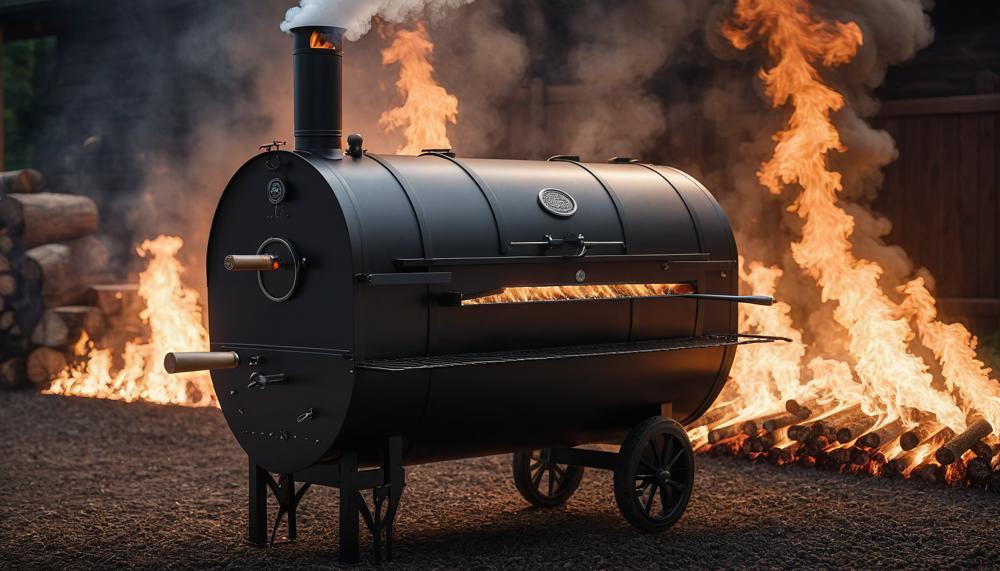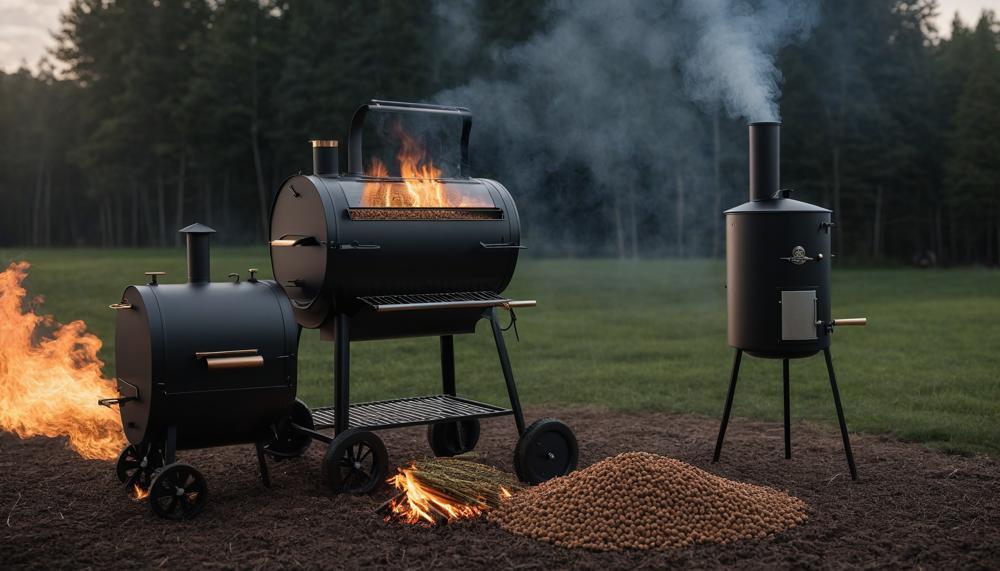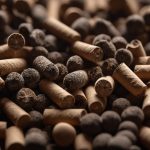The quick answer is no—it’s never truly too cold to use a pellet smoker. However, colder temperatures can make the process a bit more challenging. Pellet smokers have surged in popularity over recent years, cherished for their convenience and ability to impart a rich, smoky flavor to a variety of foods. Unlike traditional charcoal or gas grills, pellet smokers use wood pellets as fuel, offering a more hands-off approach to achieving that perfect smoky taste.
But as winter sets in and temperatures drop, many grilling enthusiasts find themselves wondering: Will their beloved pellet smoker stand up to the cold? The truth is, while pellet smokers can indeed operate in cold weather, a few adjustments and preparations are necessary to ensure they perform optimally.

Here’s what you need to know if you’re considering firing up your pellet smoker in the chilly months:
- Temperature Sensitivity: Cold weather can impact the smoker’s internal temperature, potentially leading to longer cooking times or struggles in maintaining consistent heat.
- Pellet Choice: Hardwood pellets are preferable in colder conditions, as they tend to burn hotter and more efficiently than their softer counterparts.
- Environmental Factors: Wind and humidity can further complicate cooking by affecting heat retention and smoke distribution.
Cooking in the cold doesn’t have to be a hassle. With the right precautions, you can enjoy delicious smoked meals all year round. Read on to discover tips and tricks for using your pellet smoker in the dead of winter, and how to keep your grilling game strong despite the cold.
Key Takeaways:
- Cold weather can affect your pellet smoker’s performance, but it’s manageable with the right techniques.
- Choose hardwood pellets for better heat retention in cold conditions.
- Use thermal blankets or insulation jackets to help your smoker maintain consistent temperatures.
- Preheat and monitor your smoker closely to avoid extended cooking times.
Get ready to face the cold with confidence and keep those mouthwatering smoked meals coming, no matter the weather.
Contents
PelHeat Pellet Grill/Smoker Database
This database is meticulously curated to include detailed specifications, performance metrics, and user reviews of each model, making it easier for potential buyers to select the best pellet grill or smoker for their needs.
How It Helps Users Determine if It Is Too Cold to Use a Pellet Smoker:
The PelHeat Pellet Grill/Smoker Database is particularly useful in helping users determine the suitability of using a pellet smoker in cold weather. Here’s how it aids in making this decision:
Temperature Range Comparison
The database allows users to compare the operating temperature ranges of different pellet smoker models.
By understanding the minimum and maximum temperatures that each smoker can handle, users can assess if their chosen model can maintain the required cooking temperatures even in cold weather.
Performance Insights
Users can read through performance reviews and real-world usage experiences shared by other users.
These insights often include details about how well a particular model performs in various weather conditions, including cold temperatures. This information is invaluable for understanding potential challenges and how to overcome them.
Recommended Pellets for Cold Weather
The database often includes recommendations for the best types of pellets to use in cold weather. Hardwood pellets, for example, are known for their ability to maintain consistent heat output, which is crucial in colder climates.
Model-Specific Tips
Each smoker model in the database may come with specific tips for optimal use in cold conditions. These tips can include preheating times, use of insulation jackets, and adjustments in smoking techniques to ensure efficient performance.
Keeping Heat Inside The Pellet Grill/Smoker
To maintain heat inside a pellet grill/smoker in cold weather, here are some essential tips:
- Use high-quality pellets: The quality of pellets used can significantly impact the performance of a pellet grill/smoker in cold weather. Low-quality pellets can lead to inconsistent and insufficient heat, hindering the overall cooking process. Therefore, it is crucial to use high-quality pellets from trusted brands.
- Follow proper startup and shutdown procedures: For WiFIRE or AC models, it is important to follow the recommended startup and shutdown procedures to ensure optimal performance. This includes preheating the grill before adding food and properly shutting down the grill after use.
- Regularly clean the firepot and inspect components: Regularly cleaning the firepot and inspecting the hot rod, auger motor, and power cord can help maintain heat inside the pellet grill/smoker. A dirty firepot can hinder heat distribution, while faulty components can compromise performance and safety.
- Consider environmental factors: Cold or windy weather can impact the heating capabilities of a pellet grill/smoker. To counteract these conditions, it is advisable to protect the smoker from direct exposure to cold or wind. Additionally, using dry, high-quality pellets can help maintain consistent heat even in colder temperatures.
- Check RTD probe for accuracy: The RTD probe is responsible for measuring the temperature inside the pellet grill/smoker. It is essential to check it regularly for accuracy and cleanliness to avoid misleading temperature readings that could affect cooking results.
By following these tips, you can maintain optimal heat inside your pellet grill/smoker even in cold weather conditions. Remember to also consult your model’s user manual for any specific tips or recommendations on maintaining heat in colder temperatures.
What Type Of Controller Does Your Pellet Grill/Smoker Have?
Different types of controllers for pellet grills/smokers significantly affect cooking performance, especially in cold weather. Here are the main types:
Types of Controllers for Pellet Grills/Smokers
| Controller Type | Description | Impact on Cold Weather Cooking |
| 3-Position Controller | Basic controller with low, medium, and high settings. Limited control over temperature. | Not ideal for cold weather as it lacks precision. Temperature fluctuations can be significant. |
| Digital Non-PID Controller | Allows for digital temperature setting but without precise adjustments. | Better than 3-position but still struggles to maintain consistent temperature in cold weather. |
| PWM (Pulse Width Modulation) Controller | Modulates the pellet feed rate for better temperature control than basic digital controllers. | Improves temperature stability but can still struggle with drastic cold temperature changes. |
| PID Controller | Advanced controller that uses Proportional, Integral, and Derivative calculations to maintain precise temperature. | Excellent for cold weather. Adjusts pellet feed and fan speed to counteract external temperature changes, maintaining a steady grill temperature. |
| Wi-Fi and Bluetooth Controllers | These controllers often incorporate PID technology with the convenience of remote monitoring and adjustments via smartphones. | Offers excellent temperature control and convenience, making it easier to manage in cold conditions without constant supervision. |
How Controllers Affect Cooking in Cold Weather
- 3-Position Controllers: These basic controllers provide minimal control, often leading to wide temperature swings. In cold weather, this lack of precision can make it challenging to maintain desired cooking temperatures.
- Digital Non-PID Controllers: While offering digital settings, these controllers do not make real-time adjustments based on temperature feedback. This can result in inconsistent temperatures, particularly problematic in cold environments.
- PWM Controllers: These provide better temperature control than basic digital controllers by modulating the pellet feed. However, they may still be inadequate in maintaining steady temperatures during severe cold spells.
- PID Controllers: These are the gold standard for precise temperature control. They continuously adjust the pellet feed rate and fan speed to counteract temperature changes caused by cold weather, ensuring a stable cooking environment.
- Wi-Fi and Bluetooth Controllers: Combining PID control with remote monitoring, these controllers offer the best of both worlds. They ensure precise temperature management and allow for adjustments from a distance, which is particularly useful in harsh weather conditions.
Conclusion
Using a pellet smoker in cold weather is entirely feasible with a bit of preparation. Cold temperatures can challenge your smoker’s ability to maintain consistent heat, potentially leading to longer cooking times and higher pellet consumption. To combat these issues, opting for high-quality hardwood pellets, which burn hotter and more efficiently, is key.
Moreover, investing in thermal blankets or insulation jackets helps retain heat, ensuring a steady temperature inside the smoker. Preheating for a longer duration and monitoring the smoker closely can also mitigate the effects of the cold. Advanced controllers, like PID or Wi-Fi-enabled ones, offer precise temperature control, making it easier to manage your cooking in colder conditions.
Despite the challenges, with these strategies, your pellet smoker can produce mouthwatering smoked meals year-round.






